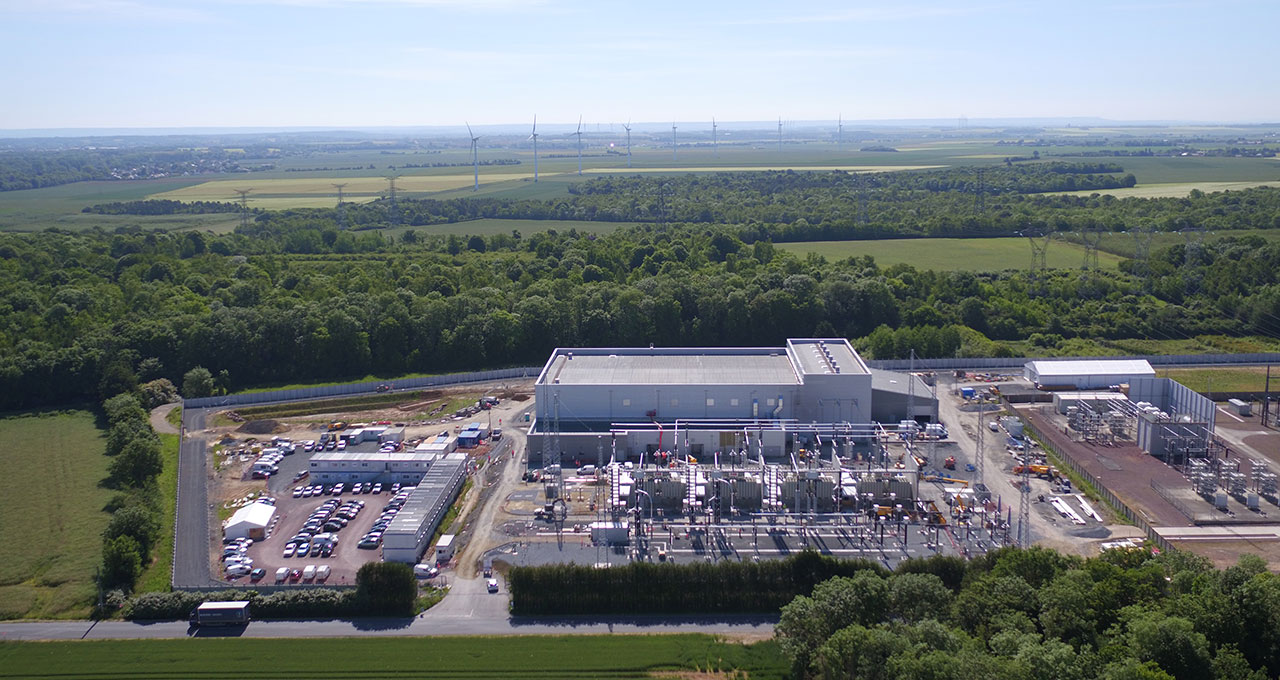Supergrid set to strengthen energy links between France and UK
Reading time: 6 min
In 2016, the French transmission system operator RTE and its British counterpart National Grid decided to create IFA2, a subsea high-voltage direct current (HVDC) cable running between France and the UK, to facilitate the increase in electricity trade between the two countries. We speak to Christian Cartalas, CEO of VINCI Energies Transport et Transformation d’énergie, and Arnaud Gautier, business unit manager of Omexom Major Projects, the VINCI Energies business unit responsible for delivering part of the infrastructure.

Can you tell us a bit about the background to the IFA2 project?
Christian Cartalas: Each year, 500 million Europeans use 3,200TWh of electricity, and every citizen should have access to affordable, secure and sustainable energy. An increasing number of interconnector projects are being developed to ensure grid balancing at a time when there is growing demand for links between the various European networks to improve overall grid stability and build energy exchange capacity. Each operator must manage and maintain its network, adapting it to integrate a growing share of renewables into the generation mix – a key issue in the transition to clean energy. Operators must also meet local authority demand to develop hypergrids and interconnections with neighbours so as to benefit from the expansion of wind and solar power and thus achieve the European Union target of doubling the number of existing connections. IFA2 will make the most of the complementarities between power generation systems on both sides of the English Channel and the North Sea, strengthen the energy mix and enable best use to be made of the various generation sources according to each country’s individual needs.
Arnaud Gautier: This subsea interconnector, due to come online at the end of 2020, will operate at ± 320 kV DC and will allow around 1GW of power to be transferred between the two countries. One gigawatt is equal to the output of a nuclear power station, enough to continuously supply 500,000 homes. IFA2 will give France the opportunity to export its surplus energy, import power at low cost to balance national supply and demand, and promote the use of renewables. Sources of solar and wind generation can be located far away from consumers. Electricity produced from these sources, which is more intermittent and less predictable than that produced by traditional power stations, must be able to be moved quickly and in large amounts by new energy highways so as to ensure service continuity for consumers.
How did Omexom make a difference?
C.C.: Omexom has a firm foothold in its traditional business area of network maintenance, power line expansion and undergrounding, and substation upgrading and digitisation, and is now looking to position itself on the interconnector market. IFA2 is its first landmark project in the field, which it won in 2017 as part of a consortium with VCF TP Lyon. The project involves building an HVDC converter station located in the Calvados department near Caen in north-western France. As main subcontractor for ABB, Omexom and VINCI Construction are carrying out the design for the civil works, including building services, along with all of the construction and assembly works. VINCI Construction’s strong credibility and Omexom’s leading position with RTE, seen as significant advantages by ABB, were key to winning the tender. In a market hampered by stringent contractual and operational requirements, our multidisciplinary approach gives us both an overall and a detailed understanding of these HVDC systems and enables us to build a solid reputation. The project, a first in Europe for VINCI, represents an important benchmark for the Group in terms of building and equipping converter stations.
A.G.: Works began in 2018, and around 100 employees have been mobilised on the project for 18 months. We use the VINCI Energies BIM (building information modelling) system to improve efficiency and agility on this large-scale project. This helped us during the design phase to identify interface issues between the many trades and then to monitor works via the Digital Site application, by equipping supervision teams with tablets for entering quality control data in situ. The IFA2 project also provided an opportunity to apply lean management methodology, allowing us at each stage in the project to optimise each stakeholder’s schedule by establishing which works could be carried out jointly. Testing of the interconnector should start in June 2020, and commissioning is due to take place at the end of the year in line with the timeframe set out by the European Union.
What are the Group’s prospects in this market?
C.C.: Our aim is of course to follow this up with other HVDC projects in France, but also to export the offering to Europe where Omexom already has operations. We must remain active in this high-growth segment, which is expected to attract investment of several tens of billions of euros over the next few years. Europe’s call for a growing share of renewables to be added to the energy mix and the expected increases in electricity transmission are set to be part of a long-term trend in which we will see operators investing heavily in interconnecting and developing their grids. Over the next 10 years, RTE plans to increase its investments, partly in interconnections, from €1.5 to 2.3 billion per year.
A.G.: Many interconnector projects are already in place, with overhead lines running between countries with land borders. Other projects, similar to IFA2, are being considered by RTE, particularly between France and Spain – crossing the Bay of Biscay – and Brittany and Ireland. This cross-Channel project, which harnesses the highly complementary skills of the VINCI Group, will stand us in good stead for upcoming electricity transmission projects currently being studied in many parts of the world and will enable us to become a key player in the interconnector market.
23/07/2020


